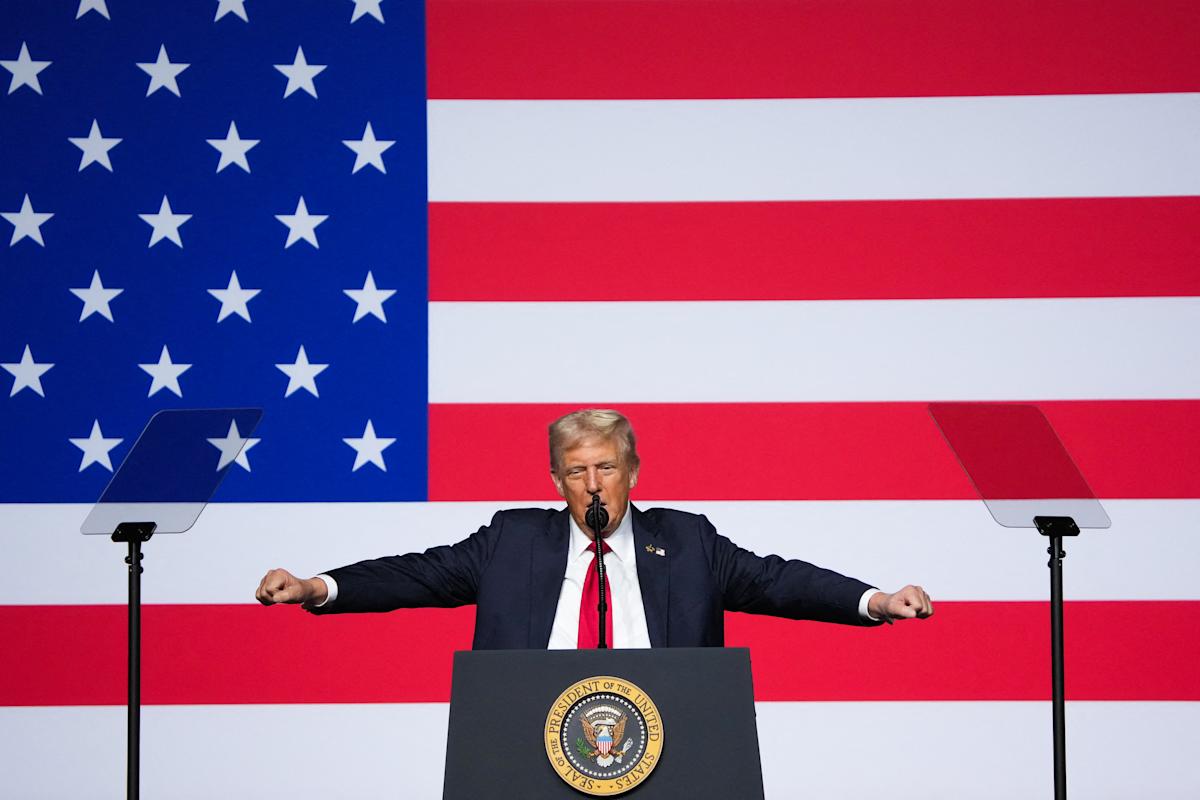How Trump Could Use a Government Shutdown to Turbocharge His Economic Agenda
As the specter of a government shutdown looms, former President Donald Trump is poised to leverage this scenario to catalyze his economic agenda. Political analysts and commentators have speculated about the potential implications of a shutdown, particularly regarding Trump’s approach to his administration’s policies that could thrive even amidst federal turbulence.
The Uninterrupted Economic Agenda
While a government cessation typically halts various public services and programs, Trump’s priorities appear to remain largely unaffected. Administration-crafted contingency plans ensure that key economic initiatives continue unabated. For instance, the ongoing imposition of tariffs on imported goods remains active, premised on national security concerns as outlined under Section 232 of the Trade Expansion Act. This legal framework allows for an uninterrupted investigation into the effects of imports on U.S. security, leading to potential tariffs on critical sectors such as semiconductors and essential minerals.
Moreover, Trump’s administration announced upcoming tariffs on a range of goods—including pharmaceuticals and heavy trucks—despite the economic slowdown caused by a government shutdown. These tariffs are set to take effect on Oct. 1 and Oct. 14, underscoring Trump’s commitment to his economic policies amidst fiscal uncertainty.
Utilizing Shutdown Powers
Trump has indicated a willingness to utilize expanded powers during this shutdown period, signaling intentions to restructure government operations. He has suggested the potential for workforce reductions and the elimination of specific programs that he deems non-essential, particularly those aligned with Democratic priorities. This approach echoes his previous administration’s ambition to streamline government operations, echoing the ethos of the Department of Government Efficiency, colloquially known as "DOGE 2.0."
Budget Director Russell Vought’s recent announcement to freeze around $18 billion in infrastructure funding for New York City, along with a substantial $8 billion cut to green energy projects benefiting blue states, exemplifies this strategy to reallocate resources in a politically charged environment. Critics, including Senate leaders from New York, have decried these actions as strategically counterproductive, further polarizing the debate.
Funding Controversies
One of the most contentious aspects of Trump’s economic strategy involves a proposed $20 billion currency swap with Argentina. This financial maneuver aims to support the administration of Javier Milei, a leader aligned with Trump’s own economic philosophies. Critics, like Rohit Chopra—former director of the Consumer Financial Protection Bureau—have labeled this initiative an "inappropriate bailout," raising concerns about the implications for U.S. taxpayers during a government shutdown. While essential economic data release will pause, funds for foreign projects have been classified as necessary government functions.
Historical Context and Future Implications
Trump’s current strategies draw from historical precedents where political crises served as a platform for policy innovation. The notion articulated by Rahm Emanuel—"never let a crisis go to waste"—could manifest in new, often contentious federal initiatives. Trump’s administration has signaled its readiness to redefine federal workforce relations, hinting at layoffs and program permanent cuts in a manner some critics argue stretches legal boundaries.
This potential upheaval of the federal workforce has already ignited legal battles, with federal employee unions filing lawsuits against the Trump administration’s aggressive intentions. Such litigation argues that threats to fire employees during a shutdown represent an abuse of power, aimed primarily at pressuring Congress into submission. This ongoing legal struggle underscores the complicated interplay between political ambition and employee rights, further complicating the government’s fiscal landscape.
Broader Economic Consequences
The impact of consolidating Trump’s economic policies during a shutdown could resonate throughout the economy, especially concerning the federal workforce and related sectors. Uncertainty among government employees heightens risks of economic ripples affecting broader markets. As Vought takes charge of the infrastructure funding strategy alongside potential workforce restructuring, predictions about immediate and long-term economic fallout hinge on how these initiatives materialize.
Political factions will undoubtedly respond differently to Trump’s moves. While supporters may advocate for his aggressive stance as a means of revitalizing the economy and streamlining government, opponents are likely to characterize these actions as intimidation tactics devoid of justification.
Conclusion
As the prospect of a government shutdown unfolds, Trump’s intentions to navigate the turbulent waters seem clear. He is determined to use the situation as a launching pad for his broader economic agenda, seizing this moment to push through reforms and initiatives he previously championed. Although Trump’s administration may succeed in maintaining elements of its economic strategy during this crisis, the long-term consequences on workforce morale and economic stability remain uncertain.
In this hyper-political landscape, where every decision could be monumental, the implications of a government shutdown will be felt well beyond its immediate effects. Political, economic, and social frameworks will converge, shaping the future narratives around governance and policy in the United States. Whether the shutdown becomes a vehicle for positive economic changes or a catalyst for division will depend on the evolving dynamics between Trump’s ambitions and the responses from various political and public factions.









